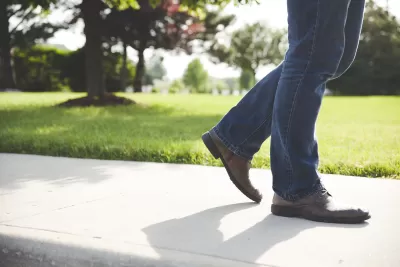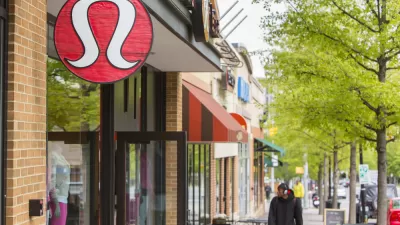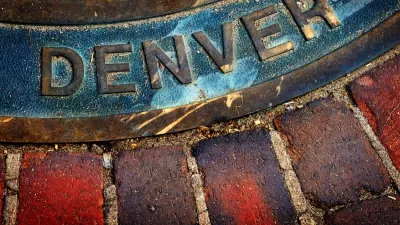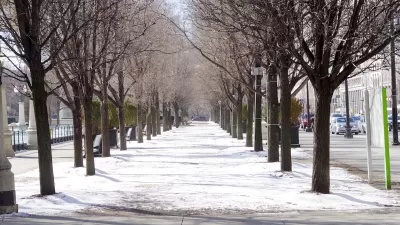Narrow sidewalks and pathways mean that people cannot realistically stay far enough apart.

"The recommendations to keep our space from other people during these crazy times are revealing the shortcomings in our dominant sidewalk and pathway design practices," writes Don Kostelec.
Social distancing is difficult, or even impossible, when minimum and functional widths of sidewalks and pathways are not sufficient to maintain six feet of space between people. "Have you tried that on a four-foot wide sidewalk that lacks a buffer from the street? What about on a sidewalk that has a railing or retaining wall on the back side of it? Have you attempted to keep your six-feet of space while passing someone on an 8-foot wide shared use pathway?" asks Kostelec.
Kostelec presents a series of examples of walkways that clearly privilege automobiles over pedestrians and highlights the issues with navigating these shared spaces during the pandemic.
FULL STORY: Maintainaing Social Distance along Substandard Sidewalks & Pathways

Americans May Be Stuck — But Why?
Americans are moving a lot less than they once did, and that is a problem. While Yoni Applebaum, in his highly-publicized article Stuck, gets the reasons badly wrong, it's still important to ask: why are we moving so much less than before?

Study: Maui’s Plan to Convert Vacation Rentals to Long-Term Housing Could Cause Nearly $1 Billion Economic Loss
The plan would reduce visitor accommodation by 25,% resulting in 1,900 jobs lost.

Placekeeping: Setting a New Precedent for City Planners
How a preservation-based approach to redevelopment and urban design can prevent displacement and honor legacy communities.

San Diego Swaps Parking Lane for Kid-Friendly Mini Park
The block-long greenway will feature interactive play equipment and landscaping.

Tracking the Invisible: Methane Leaks From LA’s Neighborhood Oil Sites
Environmental advocates are using infrared technology to monitor and document methane leaks from neighborhood oil sites, filling regulatory gaps and pushing for stronger protections to safeguard community health and the climate.

Montana Bill Promotes Parking Reform
A bill before the Montana state senate would bar cities from requiring more than one parking spot per new housing unit.
Urban Design for Planners 1: Software Tools
This six-course series explores essential urban design concepts using open source software and equips planners with the tools they need to participate fully in the urban design process.
Planning for Universal Design
Learn the tools for implementing Universal Design in planning regulations.
Caltrans
Heyer Gruel & Associates PA
Institute for Housing and Urban Development Studies (IHS)
City of Grandview
Harvard GSD Executive Education
Salt Lake City
NYU Wagner Graduate School of Public Service
City of Cambridge, Maryland





























